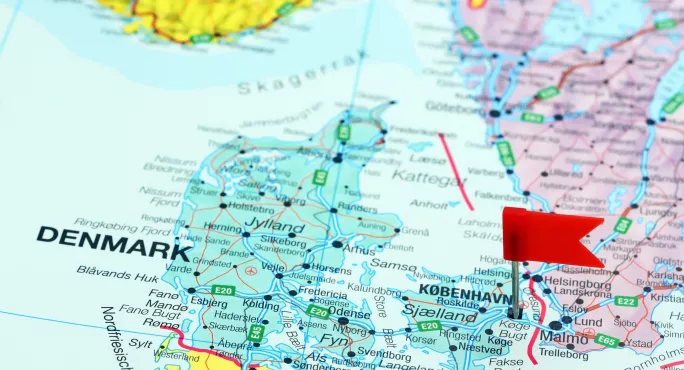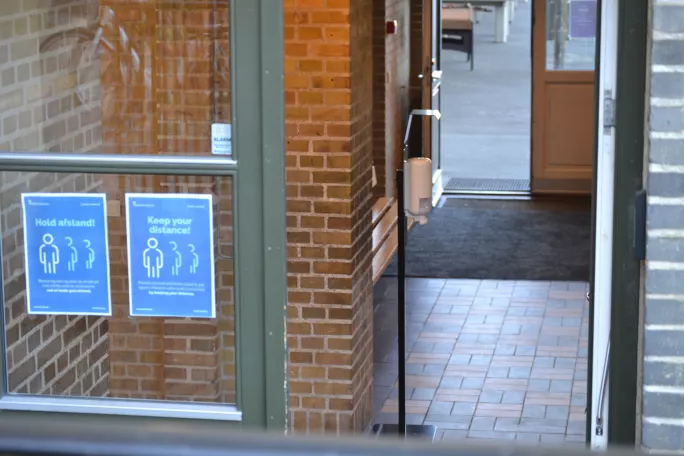- Home
- What is it like in Denmark’s reopened schools?
What is it like in Denmark’s reopened schools?

Pupils are cycling and walking to school, teachers are preparing for the day, children are learning in classrooms and playing in the sunshine, happy to be with their friends and teachers again. The grip of coronavirus is loosening.
All in all, it’s good to be back!
However, despite being back in school for a week now, these are still not normal school days, and we are operating in a very different environment, under the guidance of the Danish health authorities.
Denmark was one of the first countries to impose the lockdown, on 11 March, to ensure that the healthcare system could cope.
While the four weeks of isolation seemed unreal and like something out of a film, most people followed the guidelines and the lockdown restrictions.
Because of this, our overall numbers of those infected by the coronavirus have dropped since 1 April. This meant it was good news all round when the prime minister announced that phase one of the reopening of society on 15 April would include primary schools and kindergartens.
Preparing to reopen
As a school representing both a Danish and an international school, this meant we had the task of preparing teachers, staff, parents and the 310 primary pupils to come back.
It’s worth making clear that in Denmark during phase one of the reopening, children from Reception class up to Year 6 can attend, while the secondary school children still need to remain at home and continue distance learning.
Furthermore, Denmark is not opening the schools just to continue educating the pupils, but also to give parents more space to work and contribute to society.
Some parents were unhappy with this approach: they felt that the children were being used as “frontline guinea pigs” and were very concerned about having to send them into school.
As a result, our job was to give clear communication to parents regarding all the measures that would be put in place to ensure that their children would be safe.
To do this, I wrote a long email to parents on Good Friday explaining everything in detail that we would be doing and then another on Easter Monday; one after the first day and one at the end of the first three days, to ensure they knew exactly what was happening and how it would be implemented.
This was especially important as parents are not allowed in school, so can only email teachers with any questions they may have.
It was also essential to reassure those families with health issues in the high-risk category that it was fine to keep their children at home; children would continue to have work sent home to them, and teachers would continue to be allowed to work from home.
The uncertainty for both the schools and the parents meant that a key message we always returned to was: “We are following the official guidelines from the Danish health authorities.”
So what is life like back in school?
How have we managed reopening?
Because the news came right before Easter there was much planning during the Easter break about how the reopening could be carried out.
After all, teaching and running a school while maintaining social distancing of two metres between each child is not easy.
In order to follow these guidelines there are a number of changes to school life that have changed:
- Twice a day, we clean all desks with disinfectant, and we also clean door handles, playgrounds and other critical areas.
- Arrivals and departures are staggered in year groups, so the children come into school in ones.
- Children have been told to arrive with thoroughly washed hands, and must wash hands and use the hand sanitisers that are placed at entrances and in classrooms (see image below)

- Children with symptoms need to stay home for 48 hours. Children who come to school with symptoms are sent home immediately, which has proven difficult in the season of pollen allergies.
- Staff are limited to working with only one or two classes and restricted to certain buildings.
- Each class is divided into two classrooms, and some are even using outside areas.
- Support and subject teachers are helping class teachers to cover the two rooms, and most of our part-time staff are now working full-time.
- Classes take turns to go out to play in restricted areas as the children play only with those in the same class.
- All children need to be self-sufficient for the whole day bringing their packed lunch, drink and pencil case as they can’t borrow anything from anyone else.
- Parents and visitors are not allowed on the school premises at all.
How are the children coping?
Introducing all this has been a challenge, but despite these changes we have seen many positive developments.
We can see children are growing with the tasks and the responsibility this gradual opening presents. Since teachers can’t get too close to pupils, the children are now learning even more how important it is to self-evaluate their work, thus becoming more reflective.
They are also learning to be more independent, as help from adults is limited, even when it comes to smaller tasks like opening a water bottle.
At our school, we are also blessed to have a beautiful park where our children can play, and even here, we can see children taking pride in the responsibility it takes to follow guidelines like social distancing.
We’ve even seen new games invented where the distancing is a core part of the game.
In short, the children are pleased to be back, and while we are still in a state of emergency, we can see that strong values, community, and clear communication help in continuing a safe and sound environment for children, staff and teachers.

How have teachers had to adapt?
While it has been a challenge to open under these very different conditions, teachers have adapted well and taken on the new tasks.
For example, some teachers are part-time SEND and EAL teachers who now have to teach half the class lots of other subjects, such as maths.
They all have a new timetable as they all have different breaks. Even the staffroom can only house two or three teachers at a time.
Many bring their own flask of coffee etc so they don’t need to touch the kettle in the staffroom. So many small things but they are all important!
Parents have, in most cases, been positive about the return. However, some have had strong feelings on whether to send their children back but seeing the measures in practice have helped to relay the message to the parents that we do look after their children.
This has meant that even those who were sceptical at first have now sent their children back too.
The future
Looking forward, we will have to go back to using one classroom per class to have room for the secondary school.
We don’t know when this will happen, but we will find a solution for keeping everyone safe as they return to school.
We know that our ability to adapt, communicate and help each other will serve us well as we look towards the second phase of the reopening.
These are most certainly strange times, but by working together, and by everyone playing their part, we will see a successful reopening of society.
Shirley Jacobsen is the head of the International Primary School at Rygaards International School in Copenhagen, Denmark
Register with Tes and you can read two free articles every month plus you'll have access to our range of award-winning newsletters.
Keep reading with our special offer!
You’ve reached your limit of free articles this month.
- Unlimited access to all Tes magazine content
- Save your favourite articles and gift them to your colleagues
- Exclusive subscriber-only stories
- Over 200,000 archived articles
- Unlimited access to all Tes magazine content
- Save your favourite articles and gift them to your colleagues
- Exclusive subscriber-only stories
- Over 200,000 archived articles

